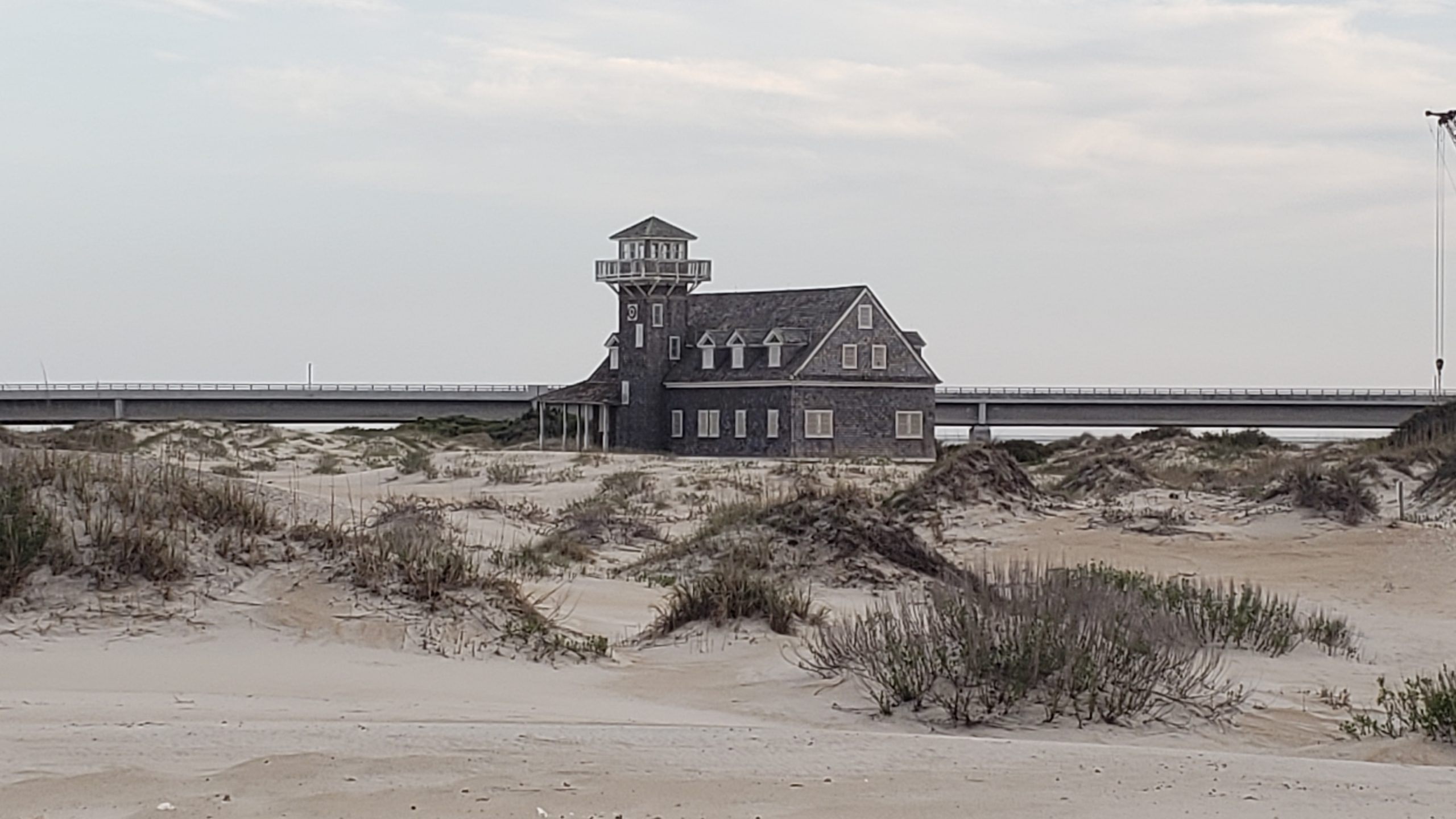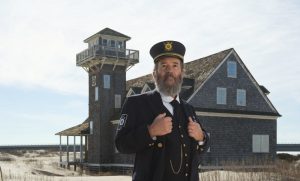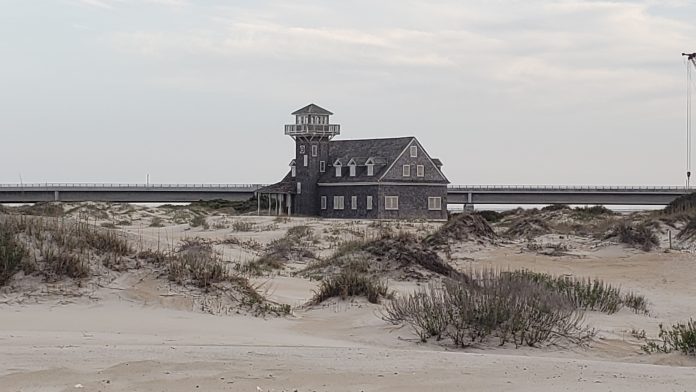
By Maggie Miles for The Outer Banks Voice
Vision at odds with Aquariums’ desire to move the 125-year-old facility
There is agreement that something needs to be done with the historic, picturesque 1898 Oregon Inlet Lifesaving Station, a building whose fate has been uncertain since it was decommissioned by the U.S. Coast Guard more than 30 years ago.
The Outer Banks Coast Guard History Preservation Group, a new non-profit formed by Keeper Jame Charlet, historian, author, and former site manager for the Chicamacomico Lifesaving Station, is embarking on a plan to rescue the building—what it calls the “4R’s for Rescue-Restore-Rejuvenate-Repurpose.”

The group’s ambitious plan includes transforming the two-story building into the first visitors center for the Cape Hatteras National Seashore, a rest stop, a museum dedicated to the 29 lifesaving stations that operated for 44 years across the Outer Banks, a conference center for corporate meetings and retreats, a maritime research facility and a weather station, among other things.
But the North Carolina Aquariums, current owner of the building, has a different idea. For more than 10 years, the NC Department of Natural and Cultural Resources has had the goal of moving the 125-year-old building onto its property in Manteo, but it has not been able to acquire the funds to do so.
“Mr. Charlet has made us aware of his interest, and we share his concern for preserving this important piece of North Carolina history. Given the site’s vulnerability to more intense storms and increasing shoreline erosion, the NC Department of Natural and Cultural Resources remains committed to moving the building to a new site as the best option for its long-term preservation. Governor Cooper included funds to move and restore the building in a previous budget proposal, and we are hopeful that the legislature will include this funding in a future budget,” said a statement emailed to the Voice by Christian Legner, communications manager for the NC Aquarium on Roanoke Island.
Charlet, who authored the book “Shipwrecks of the Outer Banks, Dramatic Rescues and Fantastic Wrecks in the Graveyard of the Atlantic,” is skeptical about concerns over the threat over hurricanes and erosion. He says there is actually more land on the northern end of Hatteras now than there was 10 years and believes that if the building withstood 125 years of hurricanes, it can withstand another 125 more years. “This structure has been in that location since 1898,” says Charlet. “It will certainly last quite a few more years there.”
Since the old lifesaving station is on the National Register of Historic Places, that could also play a potential role in its fate. Asked about options for the site, James Gabbert, historian at the National Register of Historic Places, stated in an email that, “I cannot speak to any specifics about the property other than to say that a search of our database does not indicate that a request for prior approval of a move has been submitted to us.”
He did cite federal regulations indicating that “Properties listed in the National Register should be moved only when there is no feasible alternative for preservation. When a property is moved, every effort should be made to reestablish its historic orientation, immediate setting, and general environment.”

The state did put $7 million dollars into elevating, weatherizing and renovating the building in 2007–08 when the NC Aquariums initially had plans to turn the building into a satellite marine and wildlife research center. But that idea was abandoned when Jennette’s Pier was turned into a $27 million education site and the fourth aquarium facility in 2011.
According to Charlet, the Outer Banks Coast Guard History Preservation Group’s plan for a visitor’s center would benefit the nearly 3 million people who visit the Cape Hatteras National Seashore each year and boost the economy. Charlet notes that the National Seashore was established in 1953 and today, it is a world-famous resort destination.
“Those millions of people are crossing that bridge and see the Oregon Inlet Lifesaving Station and just pass it by now. And then what else do they see? Nothing but sand, and I hate this phrase, but I can hear people say, ‘I’m in the middle of nowhere.’ And they have to drive another twelve miles before they reach a village or anything…We desperately need a visitors center,” says Charlet.
He also believes the “forgotten heroes” of the lifesaving station deserve their own museum for their 44 years of service, saving people “one at a time, usually going out in storms and plucking them out of the shipwrecks. And hardly anybody ever has heard of them,” he says.
Charlet wants to start implementing his plans for the facility after his new 501c3 is finalized in January, hopes to raise funds through grants, donors and scholarships and then hire a site manager and fundraiser once the dollars start coming In. He will assume the position the executive director.
And despite the NC Aquariums’ goal and statement that “We will continue to advocate for this funding [to move the building] in future budget cycles,” Charlet says he is pressing on with this plans.
“If something is standing in the way of what you think is valuable, you want to fight for it,” he asserts.









